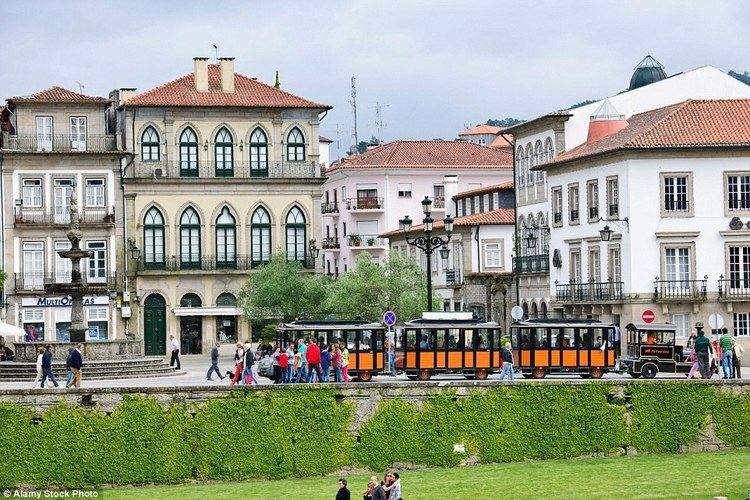Subregion Minho-Lima Population 43,498 (2011) | Region Norte Parishes 39 Local time Thursday 9:29 PM | |
 | ||
Weather 5°C, Wind N at 6 km/h, 94% Humidity Points of interest Bertiandos and São Pedro de, Dos Terceiros, Ponte Sobre o Rio Lima, Paços do Concelho, Festival Internacional De Jardin | ||
Ponte de Lima ([ˈpõt(ɨ) ðɨ ˈlimɐ]), is the oldest vila (chartered town, head of a municipality) in Portugal. It is part of the district of Viana do Castelo. The population in 2011 was 43,498, in an area of 320.25 km². The town proper has about 2,800 inhabitants.
Contents
Map of Pte. de Lima, Portugal
It is named after the long medieval bridge that passes over the Limia river that runs next to the town.
The present Mayor is Victor Mendes, elected by the People's Party (CDS-PP). It is the only municipality in Portugal ruled solely by this party. The municipal holiday is 20 September.
Ponte de lima vista do c u 4k
Parishes
Administratively, the municipality is divided into 39 civil parishes (freguesias):
General information
Ponte de Lima is located in the southern bank of the Lima, a small river with sources in Spain.
One of the oldest towns in Portugal (founded on 4 March 1125), it was historically significant as a Roman settlement in the road from Braga to Santiago de Compostela and Lugo, and the first place in Portugal getting a municipal charter.
Every second Monday, it holds one of the largest country markets in Portugal. In the second weekend of September, Ponte de Lima hold the Feiras Novas (the new fairs) for three days since 1826, granted by the Royal Provision of king Peter IV of Portugal.
The attractive rural area around has the largest concentration of baroque manors in Portugal (Bertiandos, Brandara, Calheiros, and Pomarchão are among the best known); Some provide tourism accommodation. Ponte de Lima is also known in the region for its red Vinho Verde wines.
